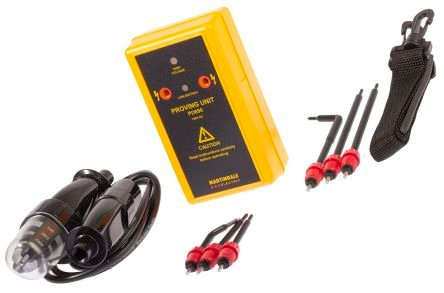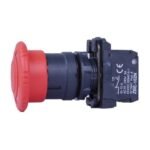Modern electronics and circuitry form the backbone of our technologically-driven era. From the minute details within a wristwatch to the expansive connections in high-speed trains, electronic circuits play pivotal roles. Consequently, the assurance of circuit functionality, safety, and efficiency is paramount. This is where proving units come into play.
Understanding the Role of Proving Units
A proving unit is a device that confirms the operational condition of electrical testing instruments, particularly voltage testers. Before and after making circuit assessments, engineers and technicians deploy proving units to ensure their testing equipment is in proper working order. By doing so, they not only safeguard the accuracy of their diagnostic results but also reinforce their confidence in the test readings.
The Precision Principle: Trust but Verify
Maintaining the Integrity of Testing Instruments: Every tool, regardless of its design, is susceptible to wear and tear, malfunctions, or calibration drift over time. Voltage testers are no exception. Regularly using a proving unit guarantees that the equipment in question is both sensitive and accurate. Before embarking on a diagnosis journey, technicians must ascertain that their tools are reliable.
Preventing False Negatives: A false negative, where a tester indicates there’s no voltage present in a circuit when there actually is, can have severe consequences. Not only does it put the technician at risk, but it can also lead to incorrect diagnostics and costly repair mistakes. A proving unit acts as a preliminary checkpoint, ensuring the tester will detect and indicate voltage when present.
The Safety Spectrum: Protecting People and Property
Ensuring Personal Safety: Working with electronics, especially in industrial environments, poses inherent risks. Electrocution, fires, and equipment damage are some of the potential hazards. By utilising proving units to validate testing tools, technicians can mitigate these risks and proceed with their tasks, confident that they’re protected from false readings.
Guarding Against Costly Repairs and Replacements: Mistakenly diagnosing an active circuit as ‘dead’ or misreading voltage levels can lead to wrong decisions. Such mistakes may result in the need for expensive component replacements, extensive repairs, or even complete system overhauls. By elevating the reliability of the diagnostic process through proving units, businesses can avoid these financial pitfalls.
Incorporating Proving Units: Best Practices
Routinely Test Before and After: Best practice suggests testing your voltage tester with a proving unit both before beginning any diagnostic task and after completion. This double-check ensures the tester was working accurately throughout the entirety of the job.
Invest in Quality: Like all tools, not all proving units are created equal. Opt for reputable brands and models. While they might come with a slightly higher price tag, the assurance of quality and accuracy they provide is invaluable.
Regularly Update and Calibrate: As with all electronic devices, proving units themselves need periodic checks and calibrations. Ensure they’re assessed regularly by professionals to maintain their efficacy.
Stay Updated with Advancements: The world of electronics and diagnostics is constantly evolving. Stay updated with the latest advancements in proving units and related technologies. This will not only enhance the accuracy of your tools but also improve the safety and efficiency of your operations.
The Way Forward: Integrating Proving Units as Standard
Given the clear advantages and the heightened level of security proving units offer, there’s a growing consensus about integrating them as a standard in electrical diagnostic procedures. As our reliance on intricate and expansive circuits grows, the margin for error shrinks. Proving units stand as guardians in this sensitive realm, ensuring every reading is accurate, every diagnosis is spot on, and every technician is safe.
Conclusion
In conclusion, proving units are not just tools but vital companions in the realm of circuit diagnosis. Their role in ensuring accuracy, safety, and efficiency elevates the confidence of every technician, promoting an environment where diagnostics are not left to chance. As the adage goes, “A workman is only as good as his tools.” And with the integration of proving units, these tools just got a significant upgrade.





